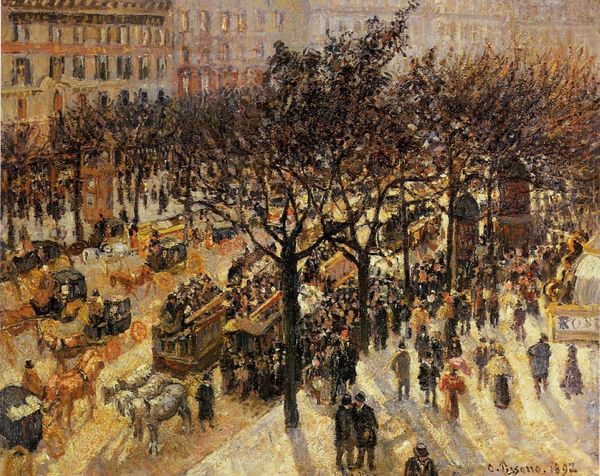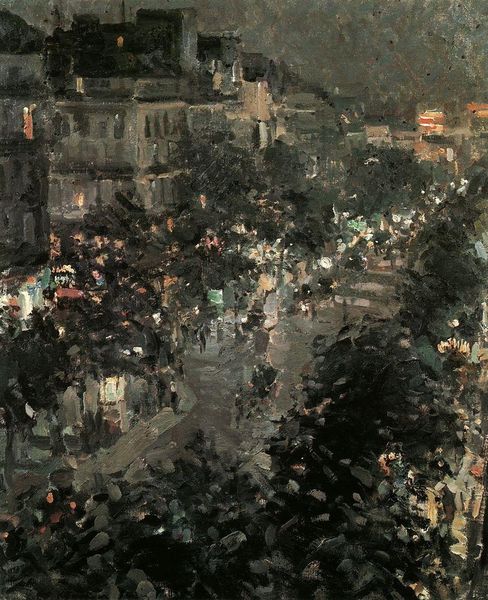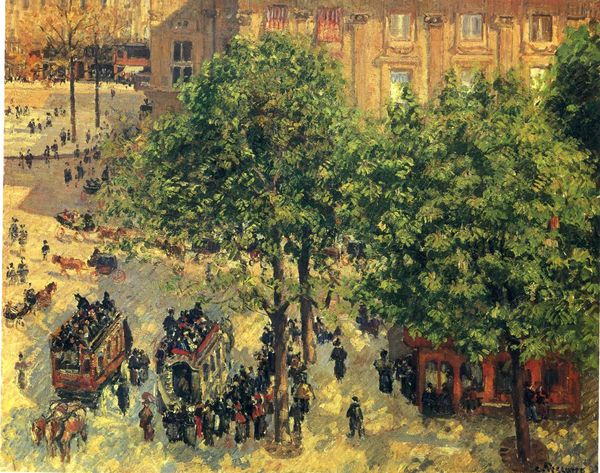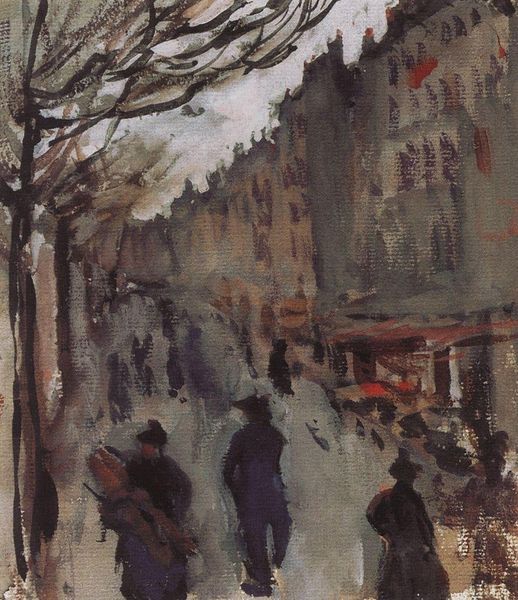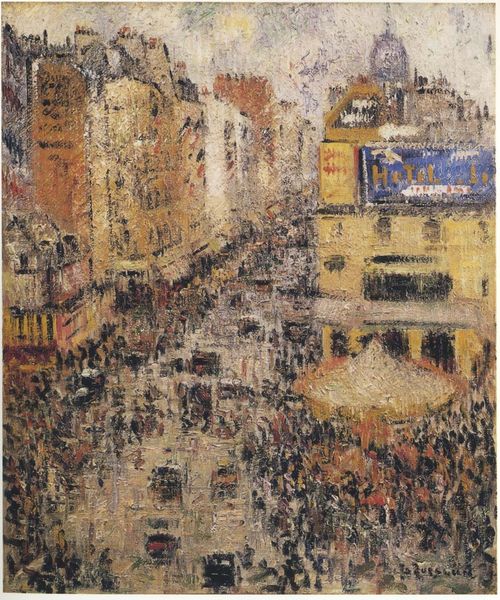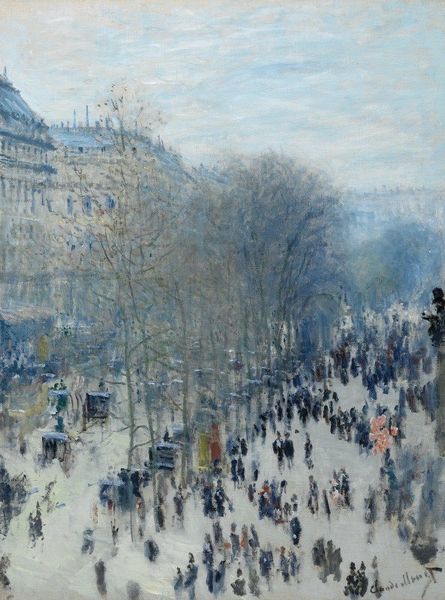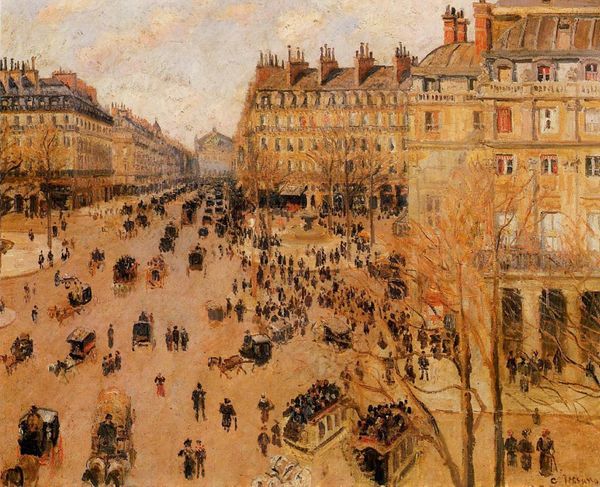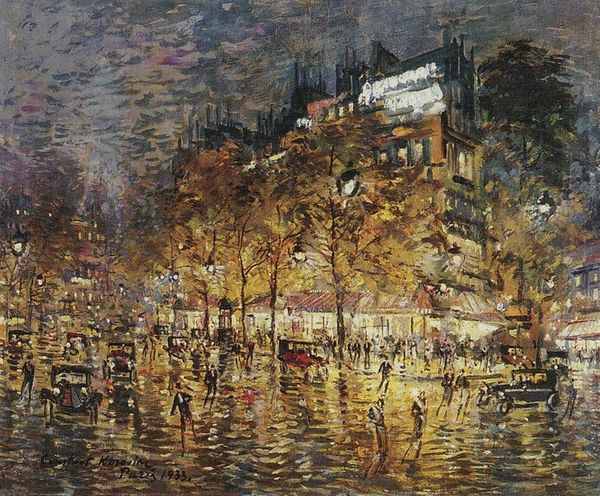
Copyright: Public domain
Curator: Here we have Konstantin Korovin’s "Paris. Cafe de la Paix," painted in 1906. Korovin, a prominent Russian Impressionist, captures a bustling Parisian scene with vibrant energy. Editor: It’s interesting – chaotic almost, but captivating. I’m drawn to the thick application of the oil paint, like textured strokes forming figures and streetlights. What a tactile rendition of the city. Curator: Indeed. Korovin was deeply influenced by French Impressionism, yet he brings a distinctive Russian sensibility to the genre. This particular work showcases the allure of Parisian cafe society during the Belle Époque, a time of optimism and cultural exchange. The cafe itself became a key public venue. Editor: Yes, I can see that influence of Impressionism so distinctly in the rapid brushstrokes. Looking closer, you begin to appreciate the labor-intensive techniques required for this style; the creation mirrors the bustling subject, capturing fleeting moments and sensations of city life, with that specific materiality. Curator: The cafe served as a vital symbol of cultural mixing, and in this painting the social life in Paris takes center stage. Its reputation attracted artists, writers, and intellectuals alike. Korovin captures the vivacity of a society on the move, emphasizing light, atmosphere, and human interaction. Editor: And notice how the illumination glows off surfaces—it brings so much into play material-wise. I wonder if the creation was deliberately to celebrate artisanal processes that produced pigments. The use of color isn't just representational—it's textural, almost sculptured! Curator: Absolutely. His position was intriguing, situated at a vantage point between East and West, navigating and interpreting these spaces in his paintings. Editor: The contrast in tones! It creates something sensual and palpable. Really shows the value found in everyday life by accentuating those materials. Curator: "Paris. Cafe de la Paix" gives us a window into an era of change and the shifting role of art in shaping our understanding of society. Editor: Well, considering both context and raw material, it seems to me to capture something lasting about this historical juncture that transcends trends, to communicate in the most sensory means!
Comments
No comments
Be the first to comment and join the conversation on the ultimate creative platform.
